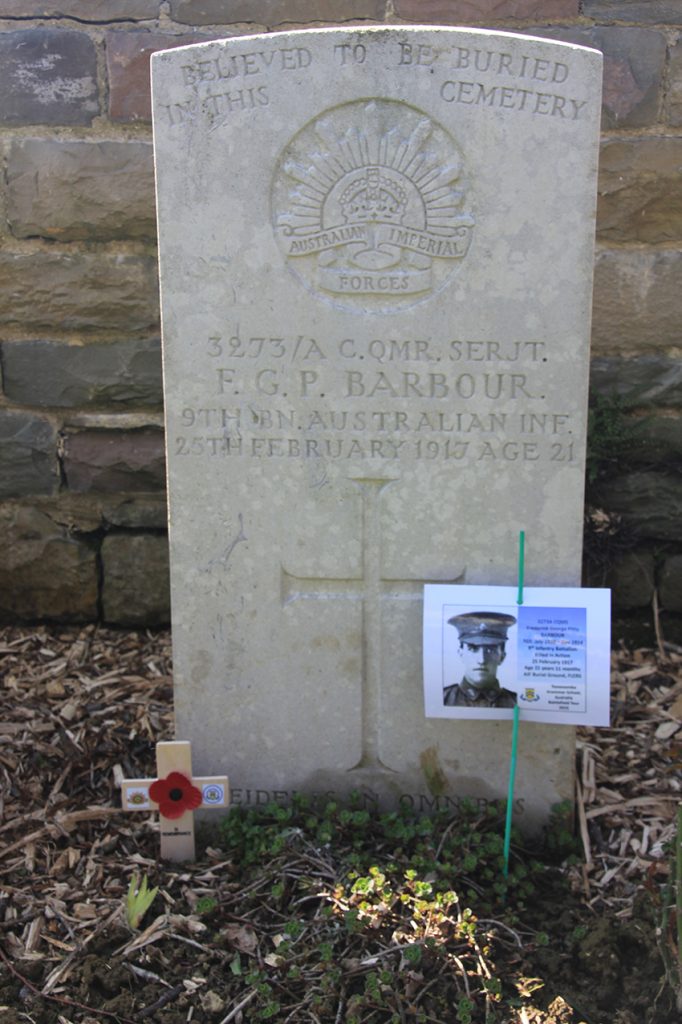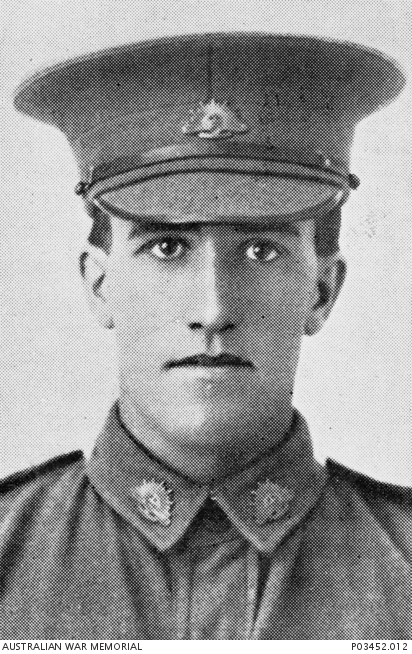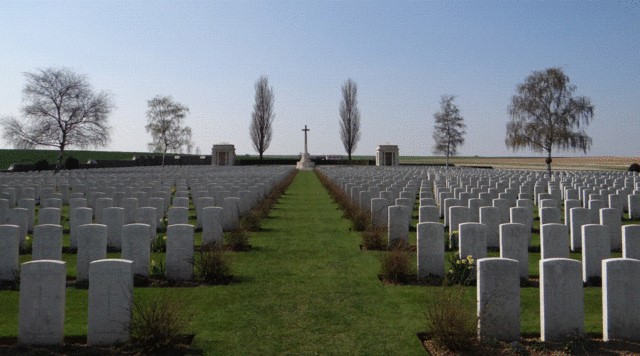A university student in Brisbane when war was declared in August 1914, Frederick George Pitty Barbour, was a former student of the Toowoomba Grammar School. His father, George Pitty Barbour was headmaster of the school from 1910 to 1935, although Frederick (Freddie to his army mates) gave his mother Isabel Frederica as NOK when he enlisted in Brisbane on 3 August 1915. At that time he was living at Emmanuel College of the University of Queensland. Apparently, he could no longer resist the pull to join the great adventure of Gallipoli and the war in Europe that dominated the thoughts of a nation and Empire, and offered the chance to be part of history-making events.
Freddie Barbour had been a star pupil at school, as his mother indicated when she wrote to the historian after the war, providing background on her son. He had been “head of school” in 1913 and a prize winner in athletics. He was a lieutenant in the school cadet unit and won an open scholarship to the university. His older brother, Eric, was married and a medical practitioner, who also signed up and spent the war in the AAMC, returning as a Major in March 1919. Eric’s wife also lived at the Grammar School. Eric, at one point, captained the AIF cricket team in England. Their father, the headmaster, was also a noted cricketer and the school’s Barbour Oval is named after him.
Fred was almost 5’7” in height and weighed 131 pounds. He was a Baptist, had a dark complexion, brown eyes and dark brown hair. He was born at Summer Hill in Sydney in 1895. By the time he enlisted in the AIF he had spent some time with the 7th Infantry in Brisbane for his compulsory military service. When he began training at Enoggera he was 20 years and 4 months old.
Fred’s first posting was to the 7th Reinforcements of the 25th Battalion. He left Brisbane with this unit in a very large reinforcement group of nearly 300 men on the HMAT Itonus on 30 December 1915. In Egypt, as the AIF re-formed after Gallipoli, he was transferred to the 9th Battalion (hence the “A” in his service number) and left for France on 27 March 1916.
Whilst serving with the 9th Battalion Fred survived the horrors of Pozieres and the winter of 1916-17, the most severe in at least twenty years in France. He was promoted, no doubt due to his experience and intelligence. He became a corporal in September 1916, and on 16 October was made Company Quartermaster Sergeant of A Company. His responsibilities involved the issuing of rations and materials for the company, of about 200 men.
On 23 February 1917 the Germans began a strategic withdrawal on a wide front in northern France. They retreated over 30 kilometres to the prepared defensive position known as the Hindenburg Line (Siegfried Line to the Germans). Their withdrawal caught the Allies by surprise; in the days that followed, front-line units were given the task of staying in touch with the retreating Germans. Often these units were caught by surprise counter-attacks. On the 25 February the 9th Battalion was pursuing the Germans near Gueudecourt, close to Flers, the scene of heavy fighting in late 1916.
At about 9:30 in the evening of 25 February Fred was working with the other CQMSs of the battalion sorting rations for his company, who were at that moment still engaging the enemy just to the east. An artillery shell landed in the middle of the group killing eleven and wounding sixteen others. A survivor stated that “two shells came over knocking everything to smithereens”. One of the killed was Fred Barbour, who suffered severe wounds to his head and stomach. Eye-witnesses disagreed whether he had died instantly, one thought he had spoken briefly, and others claimed he had survived for a couple of hours at a field ambulance. What is clear is that he died that night and was buried nearby.
At the end of the war Fred’s body was moved to the AIF Burial Ground at Flers (Special Memorial 22) with several other men. His parents were advised that the exact grave could not be fixed, and that a cross bore the words for several men, “Believed buried in this cemetery, actual grave unknown.” They thanked the army for this consideration. Fred was just short of his twenty-second birthday when he was killed. His father, at the Toowoomba Grammar School, signed receipts for his medals and commemorative plaque and scroll in the early 1920s. The inscription on his headstone states, ‘Fidelis in Omnibus’, which is the school motto, ‘Faithful in All Things’.
Fred’s name is not inscribed in strict alphabetical order on the Toowoomba Mothers’ Memorial. It is located third from the bottom of the centre column on the north panel.
Toowoomba Grammar School Archive Records stated that he started at the school on 15th July 1910 and left on 10th December 1914.
He played sport in the following teams at the school:
1911, 1913, 1914, 1915, 1916 Cricket 1st XI
1913, 1914, Rugby 1st XV
1913, 1914 Tennis 1st IV
Awards and Achievements included:
1913 – OBA Prize for Dux of Toowoomba Grammar School
1913 – Stumm Prize for Latin
1914 – OBA Prize for Dux of Toowoomba Grammar School
1914 – Stumm Prize for Latin
Leadership roles included:
School Prefect in 1913-14
Dux of School in 1913-14
He also won a scholarship to University of Queensland in 1914
The School Magazine dated May 1916 states, ’ Fred. Barbour writes from somewhere near the Canal-that was in March :-” The whole system has been reorganised, and I am now attached to the famous 9th Battalion. It was a great piece of luck to get into a Battalion with such a reputation. Our O.C. is Lieut.-Col. Campbell Robertson, and our chaplain is Captain J. Lundie Charley Fortescue has been transferred to the 49th. We are all expecting a big move somewhere.”
The school magazine of May 1917 states, ‘Co. Q. M. S. Fred G. P. Barbour was here from 1910-1915. Head of the School in 1914 and in that year he won the Robinson prize for the best all-round athlete-secured a University Scholarship and entered Emmanuel College in 1915. Left Brisbane as Sergeant of reinforcements in AND OLD BOYS’ REGISTER. 13 December, 1915. In Egypt transferred to 9th Battalion and was actively engaged in France for ten months. Was killed by a shell at Flers, south of Bapaume, on February 25th, 1917. Age, 21 years’.

Barbour FGP headstone
External Links
National Archives of Australia Military Records
Australian Red Cross Society Wounded and Missing
AWM4 AIF Unit War Diaries 9th BN Item No 23/9/4 February 1917




